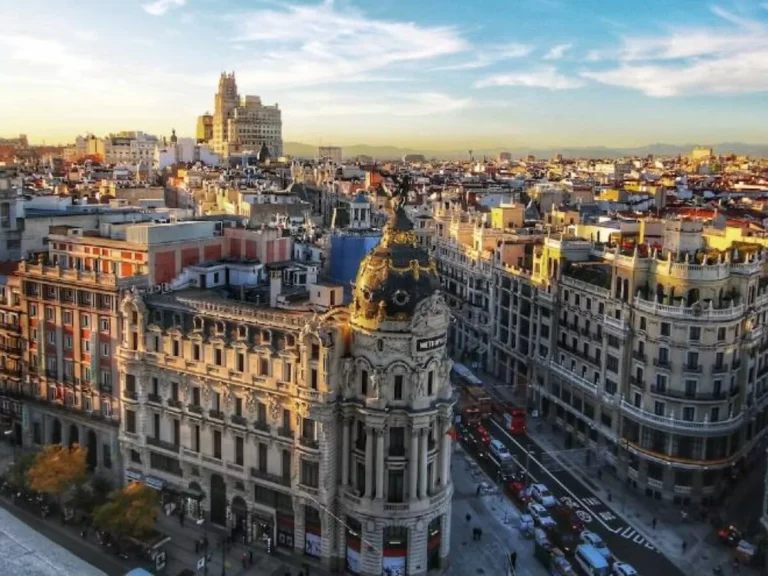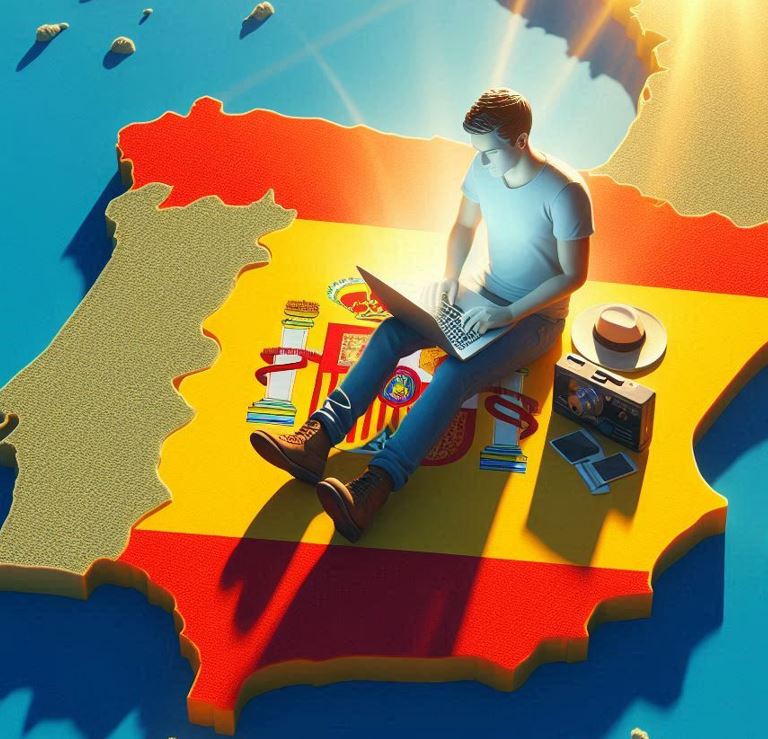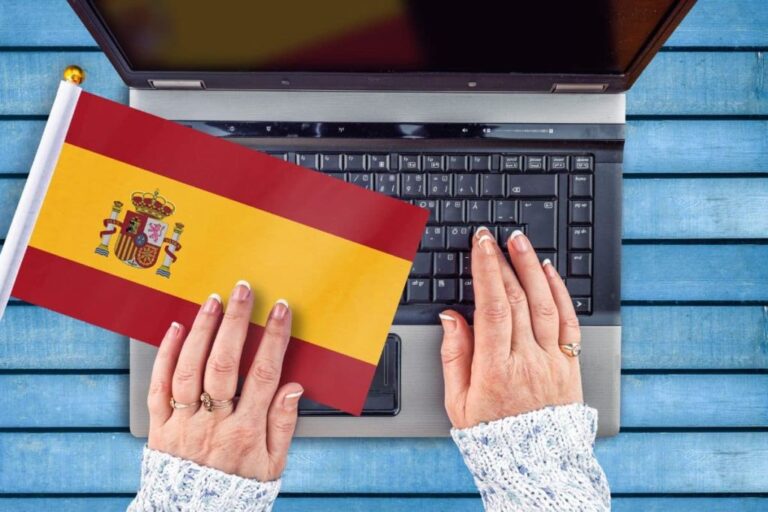What is the Cost of Living in Spain for Digital Nomads and How to Budget Effectively?
When considering the Cost of Living in Spain for Digital Nomads, it’s essential to understand the different factors that contribute to your overall expenses. Spain is increasingly becoming a popular destination for digital nomads due to its beautiful weather, vibrant culture, and relatively low living costs compared to other Western European countries. This blog will delve into various aspects of life in Spain, including housing, food, transportation, coworking spaces, and other essentials that affect your budget.
What Housing Options Are Available for Spain Digital Nomads?
Finding the right housing as a digital nomad in Spain can enhance your experience and productivity. With diverse options catering to different budgets and lifestyles, here’s a breakdown of the most popular housing choices for digital nomads in Spain.
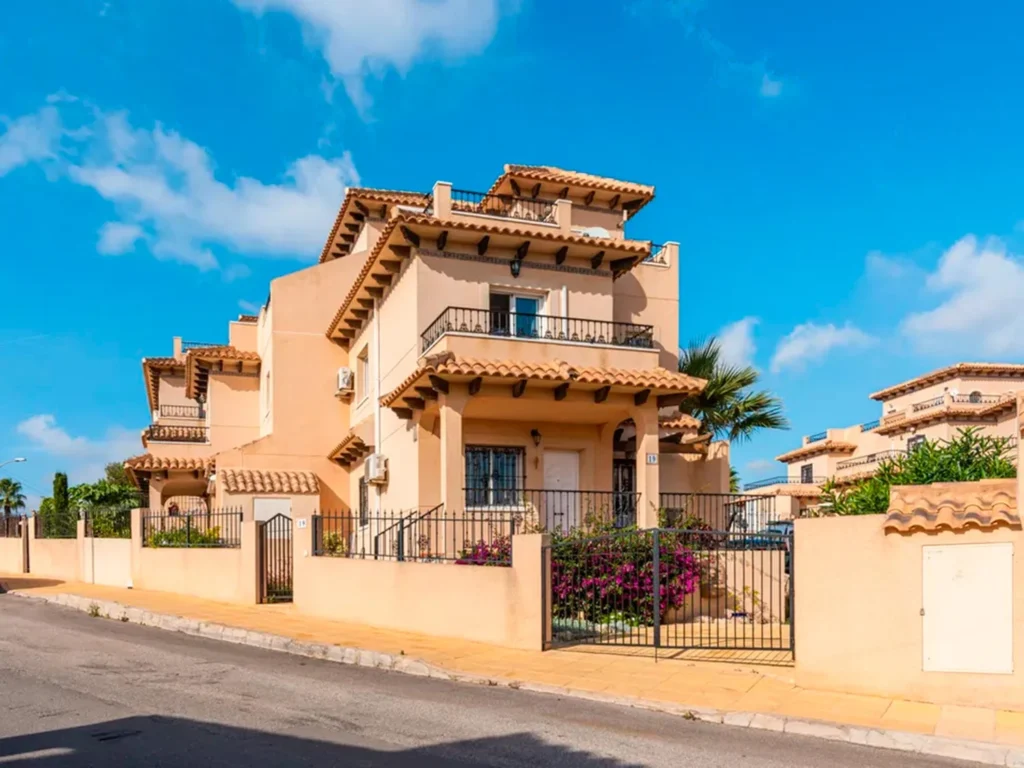
Apartments and Studios
Renting an apartment or studio is one of the most common choices for digital nomads. Whether you prefer the bustling vibe of cities like Barcelona and Madrid or the laid-back atmosphere of coastal towns like Málaga and Valencia, you can find various apartments available for short or long-term rentals. Websites like Idealista and Fotocasa are great resources for browsing listings. Look for furnished options to make your transition smoother, and don’t forget to consider factors like proximity to coworking spaces, grocery stores, and public transport.
Co-Living Spaces
Co-living has gained popularity among digital nomads, especially in urban areas. These shared living spaces typically provide fully furnished rooms, communal areas, and amenities like Wi-Fi and laundry facilities. They often foster a sense of community, making it easy to meet fellow nomads and professionals. Co-living spaces can be found in cities like Barcelona and Madrid, where you can rent for a few weeks or several months. Plus, many offer networking events and activities, allowing you to socialize while working.
Hostels
If you’re looking for a budget-friendly option, hostels can be a great choice. Many hostels offer private rooms in addition to dormitory-style accommodations. They provide a lively atmosphere and the chance to meet other travelers and digital nomads. Most hostels also have Wi-Fi and common areas to work. Look for hostels that cater to long-term stays, as they may offer discounts for extended bookings.
Vacation Rentals
Platforms like Airbnb and Vrbo offer a variety of vacation rentals, from cozy apartments to luxurious villas. This option allows you to experience living like a local in different neighborhoods. Vacation rentals can be ideal for short stays or when you want to explore a specific area in-depth. Just be sure to read the reviews and check the amenities to ensure it meets your needs as a remote worker.
Shared Housing
If you’re open to living with others, shared housing can be a cost-effective solution. You can find options through websites like Badi and Roomgo, where you can rent a room in someone else’s home. This arrangement often includes shared living spaces and utilities, and it can be a great way to immerse yourself in the local culture. Living with locals or other expats can provide valuable insights into the area, and you may even make lasting friendships.
Long-Term Rentals
For those planning an extended stay, considering a long-term rental can be a practical option. Many landlords offer leases for six months or more, which can be more affordable than short-term rentals. You might negotiate the terms directly with landlords, especially if you’re willing to commit to a longer lease. This option allows you to settle into a neighborhood, create a routine, and feel more at home.
Student Housing
Some digital nomads choose to rent in student housing, especially if they’re living in cities with large universities. These accommodations are often more affordable and cater to a younger crowd, making them ideal for meeting fellow nomads or students. Many student housing options offer shared apartments with common areas, kitchens, and study spaces.
What Is the Cost of Living in Spain for Digital Nomads
Spain is a dream destination for digital nomads, offering a vibrant lifestyle, stunning landscapes, and a rich culture. But one of the first things you might wonder about is the cost of rent. After all, finding the right place to stay is crucial for anyone working remotely. Whether you’re drawn to the bustling streets of Barcelona or the sunny beaches of Valencia, knowing what to expect regarding rental prices will help you make informed decisions.
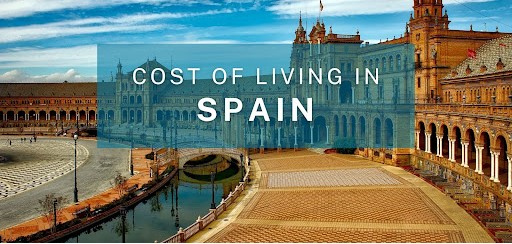
Major Cities and Average Rental Prices
When it comes to renting in Spain, the cost can vary significantly depending on the city. For example, Madrid and Barcelona are the most expensive cities. In Madrid, a one-bedroom apartment in the city center typically costs around €1,200 per month, while outside the city center, you might pay around €900. Barcelona’s prices are similar, with city-center apartments averaging €1,250 and around €950 for those located further out.
But don’t worry if those numbers sound steep. Cities like Valencia, Seville, and Málaga offer more budget-friendly options. In Valencia, for instance, you could rent a one-bedroom in the city center for about €800 or €600 outside the center. Seville and Málaga follow suit, with average rents of €750 and €700, respectively. This affordability makes these cities increasingly popular among digital nomads seeking a balance between cost and lifestyle.
Short-Term vs. Long-Term Rentals
As a digital nomad, you might be considering both short-term and long-term rentals. Short-term
options, like Airbnb, can be convenient but often come with a premium price tag. Expect to pay upwards of €1,500 per month for a decent place in major cities. Long-term rentals typically offer better value and stability, especially if you’re planning to stay for several months or longer.
When looking for long-term rentals, platforms like Idealista and Fotocasa are popular choices.
They provide a range of listings, from cozy studios to spacious apartments, helping you find a place that fits your budget and lifestyle. Just be aware that securing a long-term lease often requires a deposit and sometimes a guarantor, especially if you’re not a resident yet.
Utilities and Additional Costs
Beyond rent, you’ll need to factor in utilities and other living expenses. Utilities, including electricity, water, and internet, can add an extra €150 to €200 to your monthly budget. While this can vary based on usage and the size of your apartment, it’s essential to plan accordingly.
Moreover, consider other expenses like groceries and transportation. Spain boasts a relatively low cost of living, especially compared to other Western European countries. You can expect to spend about €200 to €300 per month on groceries, depending on your eating habits. Public transportation is also affordable, with monthly passes ranging from €40 to €60 in major cities.
Legal Aspects and Rental Agreements
As you explore your rental options, it’s essential to be aware of the legal aspects. Spain has specific laws regarding rental agreements, and it’s wise to read the fine print before signing anything. Typical lease agreements last for one year, but short-term leases can offer more flexibility.
If you have questions or need legal advice, consider reaching out to experts like Marfour International Law Firm. They specialize in providing support for expats and can guide you through any legal intricacies related to renting in Spain.
Renting in Spain as a digital nomad can be a fantastic experience if you know what to expect. With varying costs across cities, the right research can lead you to an ideal living situation that fits your budget. Whether you’re drawn to the lively atmosphere of Madrid or the laid-back vibes of Valencia, Spain offers something for everyone. Just remember to plan ahead, factor in additional costs, and stay informed about rental laws to ensure a smooth transition to your new home.
How Much Do Spain Food Costs Typically Run?
When it comes to living in Spain, one of the most delightful aspects is the incredible food scene. From tapas bars to fresh markets, the culinary culture is vibrant and diverse. But if you’re moving to Spain or just visiting for an extended stay, you might wonder how much you can expect to spend on food. Let’s break down the typical food costs in Spain so you can budget accordingly.
Eating Out at Restaurants
Dining out is a popular pastime in Spain, and the costs can vary widely based on where you choose to eat. In general, a meal at a mid-range restaurant will set you back around €15 to €25 per person. This usually includes a starter, main dish, and maybe a drink. If you’re looking for a more budget-friendly option, you can find plenty of casual eateries or local bars offering a “menu del día,” which is a set menu available during lunchtime. This typically costs between €10 to €15 and includes several courses, making it an excellent value.
If you’re craving something quick, street food is also a great option. A tasty bocadillo (sandwich) can cost around €3 to €6, and you can grab a few tapas for about €1 to €3 each at many bars. Just picture yourself enjoying a plate of patatas bravas or jamón ibérico while sipping a refreshing tinto de verano!
Grocery Shopping Costs
For those who prefer cooking at home, grocery shopping is quite affordable in Spain. On average, a single person can expect to spend about €200 to €300 per month on groceries, depending on dietary habits and preferences. Here’s a rough breakdown of common grocery prices:
- Bread (1 loaf): €1
- Milk (1 liter): €0.80
- Eggs (dozen): €2.50
- Cheese (1 kg): €10
- Chicken (1 kg): €7
- Fruits and vegetables: Prices vary, but you can often find seasonal produce at €1 to €2 per kg.
Local markets are also a fantastic way to save money while enjoying fresh ingredients. They often offer better prices and higher quality than supermarket chains. Plus, shopping at local markets gives you the chance to experience the culture firsthand.
Regional Variations in Food Costs
Food costs can differ depending on the region you’re in. Major cities like Madrid and Barcelona might be a bit pricier, especially in touristy areas. On the other hand, smaller cities and towns can offer better deals on both dining and groceries. For instance, cities like Valencia and Seville tend to have lower overall costs.
Additional Costs and Considerations
It’s essential to account for drinks when budgeting for food. A glass of local wine or beer in a restaurant typically costs between €2 to €4, while cocktails can run you about €6 to €10. If you enjoy dining out often, these costs can add up, so keeping an eye on your budget is wise.
Don’t forget to consider the cost of snacks and treats. Whether you fancy churros dipped in chocolate or enjoying a slice of flan, these little indulgences can range from €1 to €5, depending on where you go.
What Are the Transportation Costs in Spain?
Spain is a beautiful country with a rich culture, stunning landscapes, and vibrant cities. If you’re planning to visit or even move here, one important aspect to consider is the cost of transportation. Whether you’re traveling around a bustling city like Madrid or exploring the serene countryside of Andalusia, knowing the transportation costs can help you budget more effectively. Let’s dive into what you can expect when it comes to getting around in Spain.

Public Transportation Options
Spain boasts an extensive public transportation network, making it easy to travel within and between cities. Most major cities have metro systems, buses, and trams that are not only affordable but also reliable. For instance, in Madrid, a single metro ticket typically costs around €1.50. If you plan to use public transport frequently, consider getting a transport pass. For example, the Madrid Monthly Pass offers unlimited travel on all public transport for about €54, which is a smart choice for regular commuters or tourists wanting to explore the city.
Train Travel
Train travel is another popular way to get around Spain, especially for longer distances. The Renfe train service connects major cities, and high-speed trains like the AVE can take you from Madrid to Barcelona in just over two hours. Ticket prices vary based on the distance and how far in advance you book. A ticket from Madrid to Barcelona can range from €30 to €150, depending on the class and timing of your travel. The earlier you book, the better the deals you can find, so keep an eye out for discounts!
Car Rentals
If you prefer the freedom of driving, renting a car is a great option, especially for exploring more rural areas. Rental prices can range from €20 to €60 per day, depending on the type of vehicle and the rental company. Don’t forget to factor in additional costs like fuel, which averages around €1.50 per liter. Plus, keep in mind that parking can be tricky in cities, with rates typically between €1 and €3 per hour, so plan accordingly.
Taxis and Ride-Sharing Services
Taxis are readily available in cities, and the initial fare is usually around €3, with an additional charge per kilometer. For a ride within the city, expect to pay between €10 and €20. Ride-sharing services like Uber are also operational in some Spanish cities, often providing a slightly cheaper alternative to traditional taxis. Just make sure to check if ride-sharing is available in your area.
Biking and Walking
For short distances, biking and walking are not only cost-effective but also healthy options. Many cities in Spain, like Barcelona, have bike-sharing programs where you can rent a bike for a few euros. Walking is also a fantastic way to soak in the local culture and discover hidden gems that you might miss while using other transportation methods.
Additional Costs to Consider
When budgeting for transportation in Spain, keep in mind that there are other costs involved. If you’re a tourist, you might want to consider the cost of tourist transport options like hop-on-hop-off buses. These can range from €20 to €40 per day. Additionally, if you plan to travel during peak seasons, transportation costs can rise, so planning your trips in advance can help you save money.
If you’re considering moving to Spain or need legal assistance with your transportation arrangements, Marfour International Law Firm can provide expert guidance tailored to your needs. They can help ensure your relocation or travel plans go smoothly while you focus on enjoying the beautiful Spanish lifestyle.
FAQs
What is the average cost of living in Spain for a digital nomad?
The average monthly budget for a digital nomad in Spain can range from €1,500 to €2,500, depending on lifestyle choices.
Is Spain safe for digital nomads?
Yes, Spain is generally safe, with low crime rates in major cities. However, like anywhere, it’s essential to stay vigilant and be aware of your surroundings.
How can I find housing as a digital nomad in Spain?
Utilize online platforms like Airbnb, local rental sites, or co-living spaces to find suitable accommodations.
Are coworking spaces worth it?
Absolutely! They provide not only a productive work environment but also opportunities to network with other professionals.
Do I need a visa to live in Spain as a digital nomad?
Yes, you may need a visa. Consider the Digital Nomad Visa, which allows non-EU citizens to live and work remotely in Spain. For detailed information about this visa, check out resources from Marfour International Law Firm.
Conclusion
The Cost of Living in Spain for Digital Nomads can be manageable and enjoyable with careful planning and budgeting. By understanding various costs associated with housing, food, transportation, and coworking, you can make the most of your time in this beautiful country. For more detailed information about the Spain Digital Nomad Visa, consider checking out resources like Marfour International Law Firm. Embrace the Spanish lifestyle, enjoy the vibrant culture, and make the most of your digital nomad experience!

